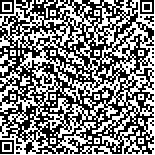| 杜 佳,于智凯,张 艳,等.重庆市上消化道癌高危人群内镜筛查依从性及影响因素分析[J].中国肿瘤,2024,33(12):1019-1026. |
| 重庆市上消化道癌高危人群内镜筛查依从性及影响因素分析 |
| Compliance and Influencing Factors of Endoscopic Screening in High-Risk Population of Upper Gastrointestinal Cancer in Chongqing |
| 投稿时间:2023-11-07 |
| DOI:10.11735/j.issn.1004-0242.2024.12.A009 |
|
 |
| 中文关键词: 上消化道癌 内镜筛查 高危人群 依从性 影响因素 重庆 |
| 英文关键词:upper gastrointestinal cancer endoscopic screening high-risk population complia-nce influencing factors Chongqing |
| 基金项目:重庆市首批公共卫生重点学科(专科)(渝卫办发〔2022〕72号);北京华夏肿瘤防治研究院资助中国消化道早癌医师共同成长计划科研项目(GTCZ-2023-CQ-01) |
|
| 摘要点击次数: 189 |
| 全文下载次数: 60 |
| 中文摘要: |
| 摘 要:[目的] 分析重庆市上消化道癌高危人群内镜筛查依从性及相关影响因素。[方法] 2012—2019年在重庆市城市癌症早诊早治项目覆盖地区,对40~74岁居民进行问卷调查和上消化道癌风险评估,动员上消化道癌高危人群至筛查医院接受内镜筛查,分析上消化道癌高危人群内镜筛查依从性及其影响因素。[结果] 本研究共完成问卷调查和风险评估266 611人,评估出上消化道癌高危人群48 000人,高危率为18.00%;完成上消化道癌内镜筛查9 162人,依从性为19.09%。多因素非条件Logistic回归分析结果显示,年龄45~64岁、高中/中专/技校及以上、离异/丧偶、有有害物质职业接触史、日常饮食烫热食物、日常饮食油脂较高、经常食用腌晒食品、家庭做饭油烟较多或很多、有精神创伤或压抑、有上消化道疾病史和上消化道癌家族史的高危人群内镜筛查依从性较好。年龄70岁及以上、目前吸烟和经常参加体育锻炼的高危人群内镜筛查依从性较差。[结论] 重庆市上消化道癌高危人群内镜筛查依从性有待提高,应针对不同特征人群进行健康宣教与健康管理,提高内镜筛查的总体依从性。 |
| 英文摘要: |
| Abstract:[Purpose] To analyze the compliance and influencing factors of endoscopic screening in high-risk population of upper gastrointestinal cancer (UGC) in Chongqing Municipality. [Methods] Risk assessment of UGC was conducted among residents aged 40~74 years old in the areas covered by the Chongqing Urban Cancer Early Diagnosis and Treatment Program from 2012 to 2019. The residents with high risk of UGC were advised to receive free endoscopic screening in designated hospitals. The compliance and influencing factors of endoscopic screening among high-risk subjects were analyzed. [Results] There were 266 611 residents who completed the questionnaires and UGC risk assessment, among whom 48 000 (18.00%) were assessed as high risk. A total of 9 162 high-risk individuals received the following endoscopic screening with a compliance rate of 19.09%. Multivariate Logistic regression analysis showed that residents aged 45~64 years old, with high school or above education, divorced or widowed status, occupational exposure to haza-rdous substances, hot food preference, high fat diet, frequent consumption of pickled and dried food, exposure to kitchen fume, psychic trauma or depression, upper gastrointestinal disease history and family history of UGC were likely to accept endoscopic screening; while those aged 70 years old and above, current smokers, and having regular physical exercise were likely to have low compliance. [Conclusion] Among high-risk residents of UGC in Chongqing, the compliance to endoscopic screening needs be improved, health education and management should be targeted to those likely to have low compliance. |
|
在线阅读
查看全文 查看/发表评论 下载PDF阅读器 |